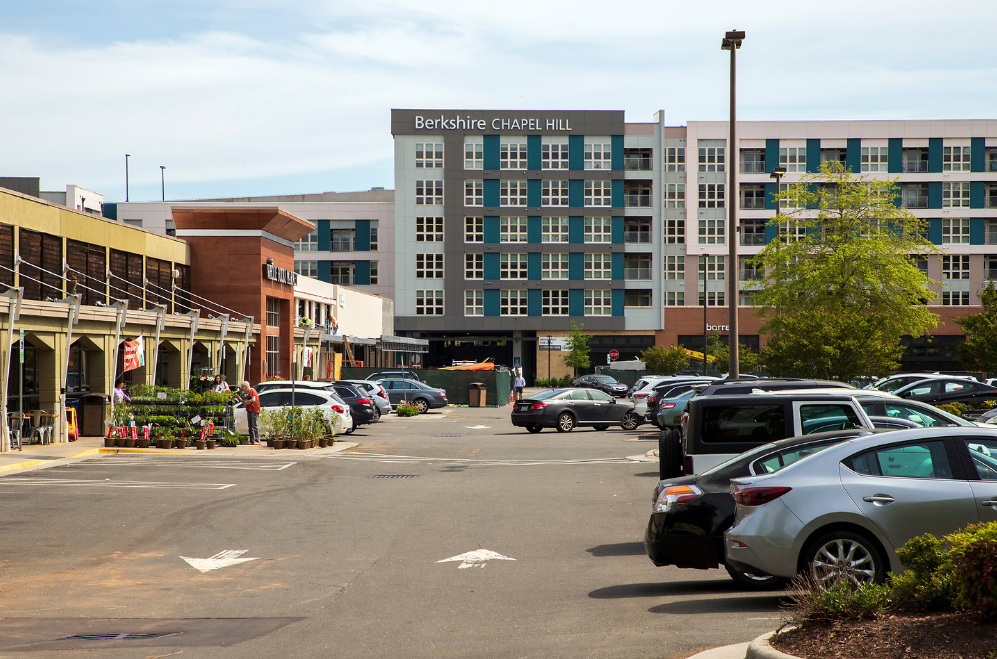
Trends in Taxes and Expenses in Chapel Hill
A perspective from Charles Humble
A recently-published “Viewpoints” on Chapelboro brought up some claims and statistics that deserve further analysis and discussion. The piece selected three newer high-profile buildings and calculated the tax revenues raised from them from FY 2012 to FY 2016 (~$5.1 million), as well as calculating the amount the town spent for services for these three buildings over the same five-year period (~$2.8 million) and concluded that Chapel Hill needs more, not fewer, tall mixed-use buildings. But, how good are these cost of services data points?
Here is a little local history on such analyses: back around 2011 the former town manager was asked, in so many words, “How much growth does Chapel Hill need so as not to increase the amount of individuals’ property taxes?” He hired the author of dozens of identical studies across the state to look into it. The resulting comprehensive report (“Chapel Hill Cost of Community Services”) came out in May of 2012. It showed that residential development costs more to support than it brings in with new revenues. It likewise shows that retail and office development provide excess revenue over associated costs.
This was not the answer that was expected. In response, town staff evaluated the costs and revenues associated with Greenbridge and 140 West (The Berkshire did not exist at the time.) The resulting staff report indeed showed cash positive comparisons for these structures. However, further in-depth review of that staff report showed that a huge amount of Town general expenses were neglected, e.g., the costs associated with demolition to produce the underground parking at 140 West. Likewise, did the cost data for West 140 include the $2+ million we paid the consultants to get the deal done? The approximately $2M spent to cleanup and continue to deal with old oil/gas leaks)? The Town’s cost to put in the charging stations the developer was supposed to provide?
Including any of these items in further analysis gives a very different picture of service costs-to-tax benefits.
Are there other, more comprehensive numbers that describe the effects of recent development around our fair city. Luckily, yes. On January 3, 2018, Kenneth Pennoyer — until recently Chapel Hill’s Business Management Director — described the financial consequences of local development to incoming council members. His analyses used data from FY2010 to FY2017.
During this period there were 41 major developments in Chapel Hill, not just the three cited in the prior discussion. Development was the only source of increased property tax revenue during the seven-year period of constant property assessments (due to the recession and falling property values.) The Town’s New Development web site for that period shows that over 82% of the new development was housing in all forms (apartments, condos, town houses, and single family), around 15% was commercial (office and retail) and 3% was institutional (churches, town buildings, etc).
Here’s the bottom line: From FY10 thru FY17, the average annual increase in the property tax base was 1.31% while the increase in the adopted budgets for the General Fund that pays for the bulk of Town services for the same period was 3.7%. (The shortfalls were covered by sales tax growth of roughly 6% annually and borrowing from cash balances.) This is not a pattern the Town can afford to continue.
The only rational conclusion is that the new development did not cover the increase of services costs that it brought — regardless of what type of development occurred. And maximizing development along already failing transportation arteries promises to further challenge local residents.
I understand how attractive some of the numbers being discussed are to fans of rapid-growth policies. But Chapel Hill will pay in many ways if we ignore the more thorough analyses from Mr. Pennoyer and from the Cost of Community Services report cited above. As we consider whom to elect to Town Council in November and to County Commission next year, let’s support candidates willing to take a more complete view of our financial, aesthetic and environmental options.

“Viewpoints” is a place on Chapelboro where local people are encouraged to share their unique perspectives on issues affecting our community. If you’d like to contribute a column on an issue you’re concerned about, interesting happenings around town, reflections on local life — or anything else — send a submission to viewpoints@wchl.com










